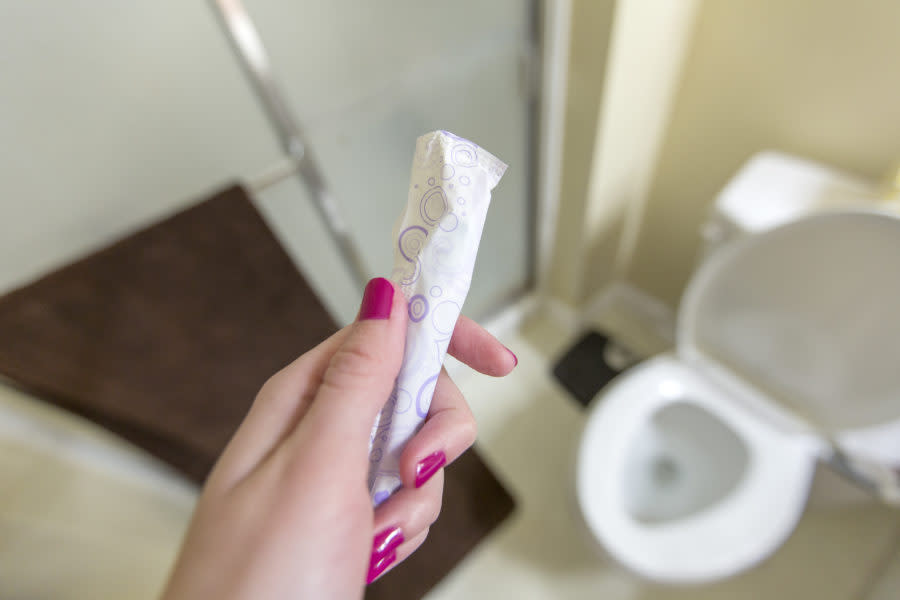How long can you safely leave in a tampon? We asked the experts
You use ’em every month, and they’ve likely saved you from many an embarrassing situation. But one question we can’t help but always wonder is: How long can you safely leave in a tampon?
Because let’s be real, some days they stay inserted longer than you intended. Maybe your flow is so light you want to keep your tampon in as long as possible. Or maybe you don’t have easy access to a bathroom (lookin’ at you, all-day music festivals). And some days you may just plain forget it’s in there. It happens. We’re all human.
But how long can you safely leave the same tampon in? And what happens if you leave one in too long? HelloGiggles spoke with U by Kotex partner and OBGYN Dr. Jessica Shepherd, and Dr. Prudence Hall, Founder and Medical Director of The Hall Center, to get the 411 on safe tampon usage.
Dr. Shepherd says that a tampon can safely be left in place between four to eight hours, but there are certainly caveats to that. She says if a tampon is not changed frequently enough, the user might “experience an unpleasant odor.” However, there’s no clear-cut definition on what “unpleasant” means, and Dr. Shepherd strongly advises women to get to know what is normal for their bodies.
“Instead of ‘normal’ and ‘bad,’ try thinking of vaginal odor as ‘typical’ or ‘unusual’ for you – on your period or not,” she says. “Throughout your cycle your vaginal mucus changes and as it changes, the odor it may produce will change too. If you’ve recently experienced a change in your vaginal odor or that it’s become stronger, consider going to see your healthcare professional.”
Another important aspect of safe tampon use: Make sure you’re using the “correct absorbency tampon depending on your menstrual flow.” She explains how crucial this is, adding, “Tampons come in different absorbencies to suit the needs of varying menstrual flows.”
“The more absorbent something is, the more liquid it can soak up. Finding the proper absorbency to suit your needs, versus always selecting the most absorbent option, is important decrease any chance of infection. Use the lowest absorbency for your needs and pack a spare in your purse,” she advises.
And what about those super light days where you still want to wear a tampon but might not need to change it that often? Dr. Shepherd says,
“Even on light days, never go longer than eight hours without changing [your tampon].”
Since many women have heard of TSS but may not know exactly what it is, we asked Dr. Shepherd to give us the lowdown. She told us, “TSS is caused by the bacterium called Staphylococcus Aureus, which exists normally in the nose, armpits, groin, or vagina of about a third of the healthy population. Sometimes certain strains of this bacterium give off a toxin. Although scientific data suggest that tampon usage increases the risk of TSS, tampons themselves have not been found to cause TSS.”
Though it can be fatal, TSS is actually extremely rare. Each year, fewer than 1 out of every 100,000 people contracts TSS, so you’re more at risk for those odors and discharge than contracting a fatal disease.
And while it is generally safe to wear tampons while you’re sleeping, Dr. Hall cautions women about keeping them in too long, saying, “Especially at night, I recommend giving your body a break from tampon use, and using pads. If you leave a tampon in too long, the tampon becomes a breeding ground for bacteria.”
And as for those rumors from the medieval era that a tampon can get “lost” or disintegrate inside your body? Absolutely not true. If you forget that you’ve got a tampon in, simply remove it as soon as you remember. If you have difficulty removing it yourself, see a doctor and they can do it for you (don’t be embarrassed. It happens).
While dealing with our menstrual cycles can suck, at least we can generally rest-easy knowing that tampons are a convenient, discreet tool to help us live our lives a little more worry-free every day of the month. Hooray to that!


